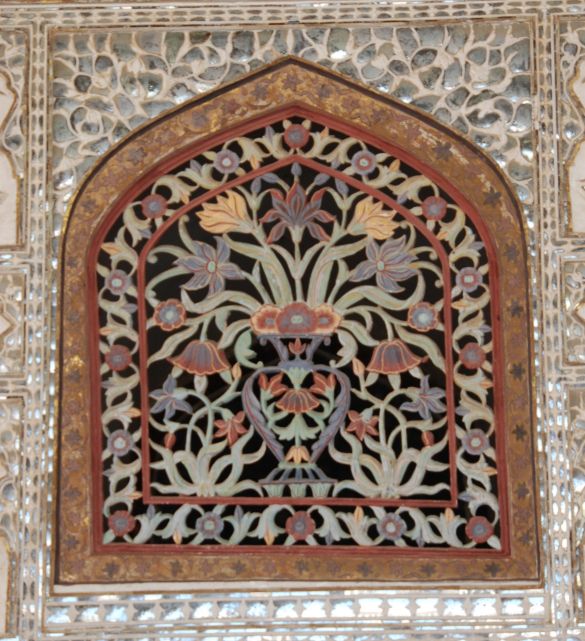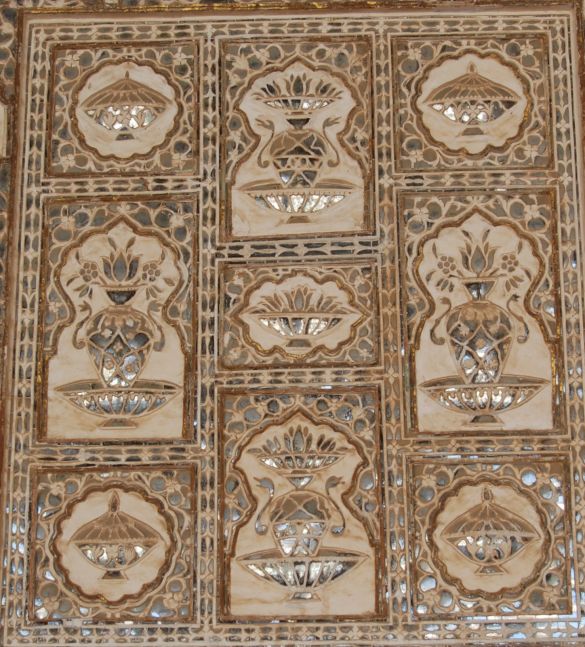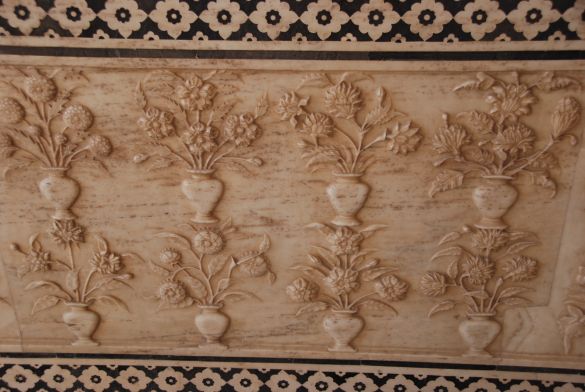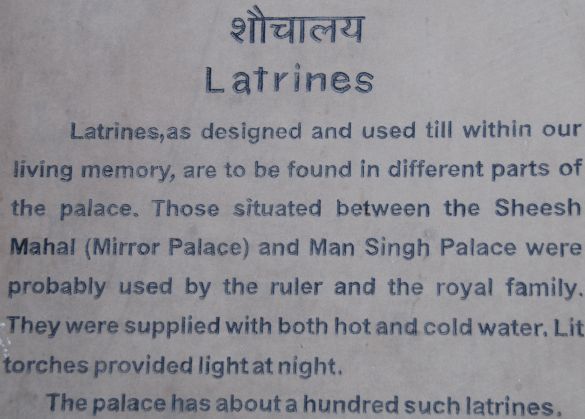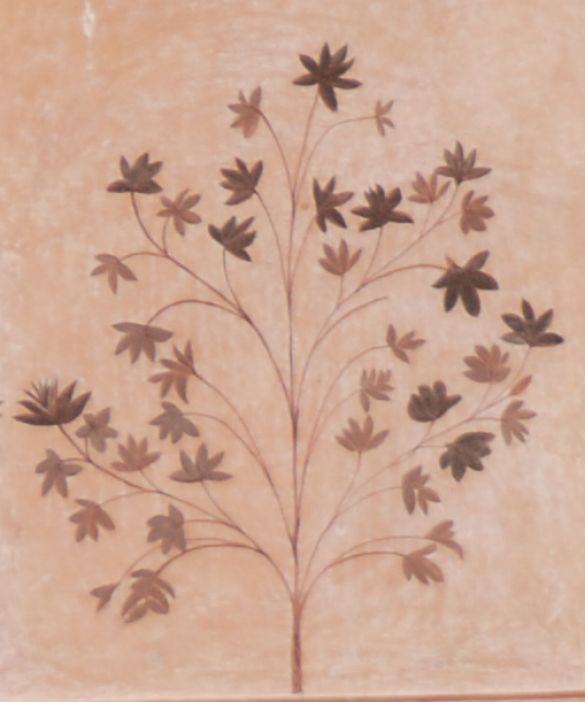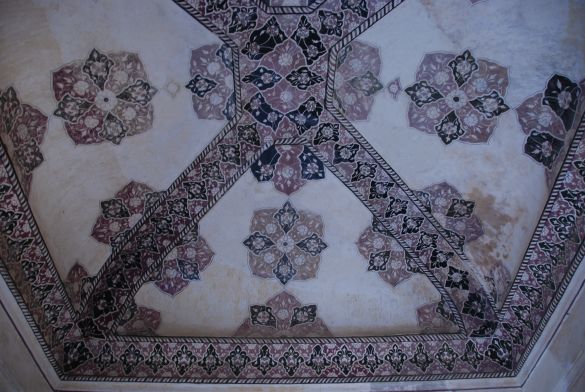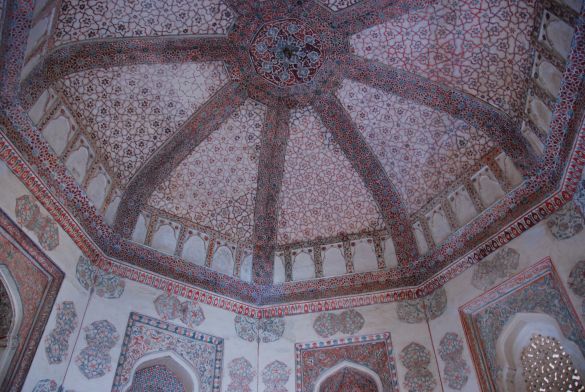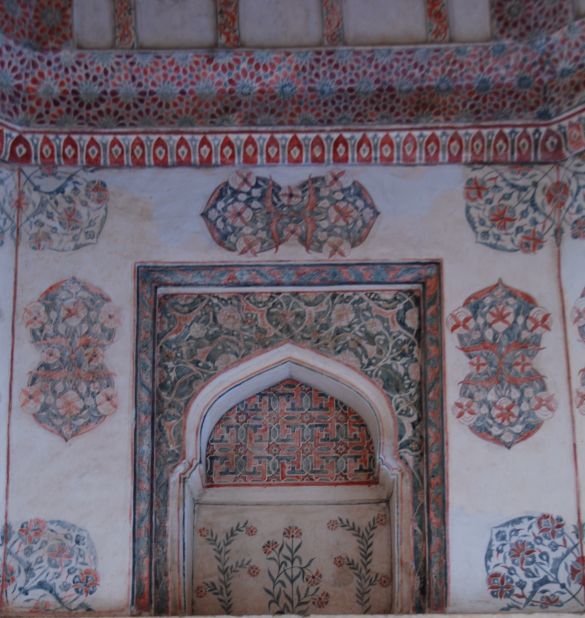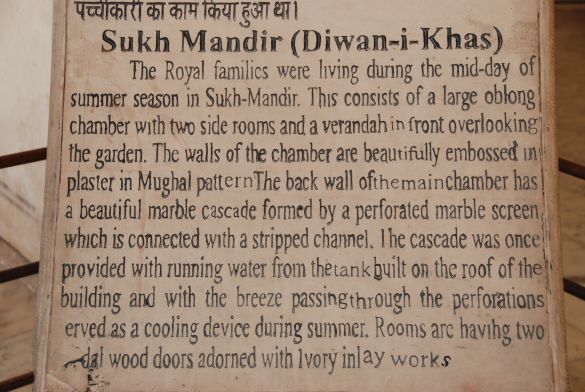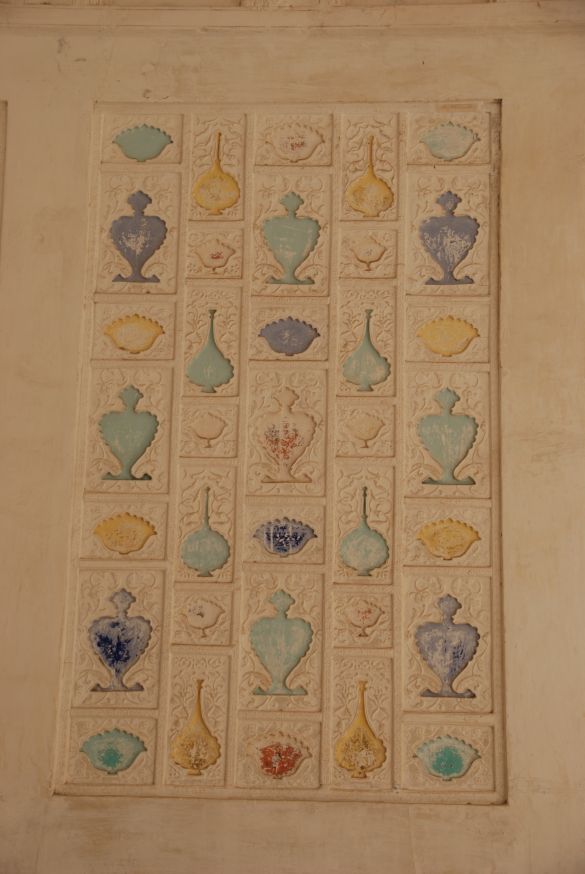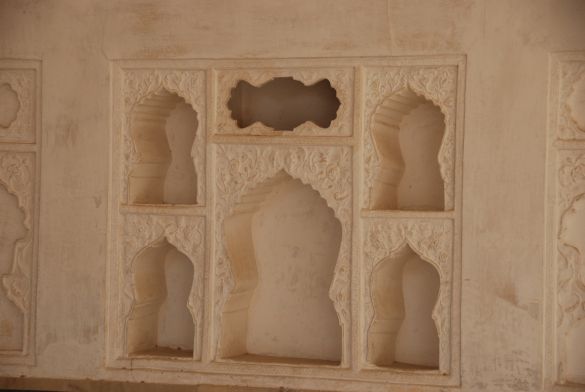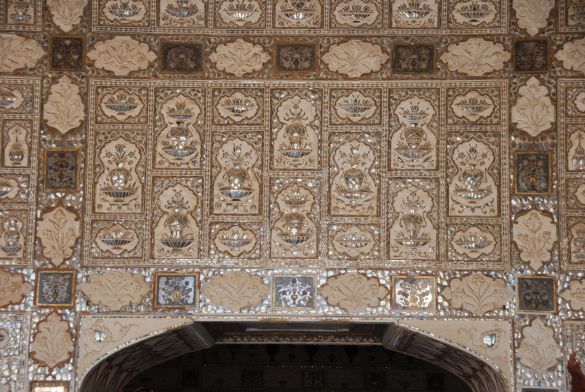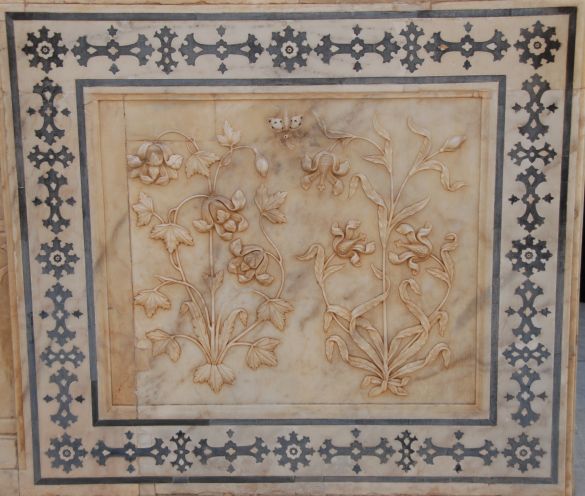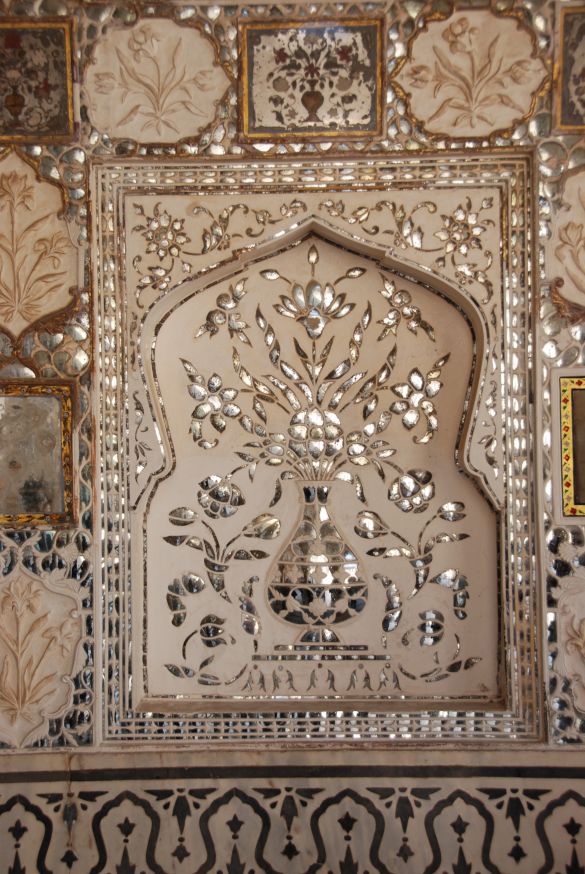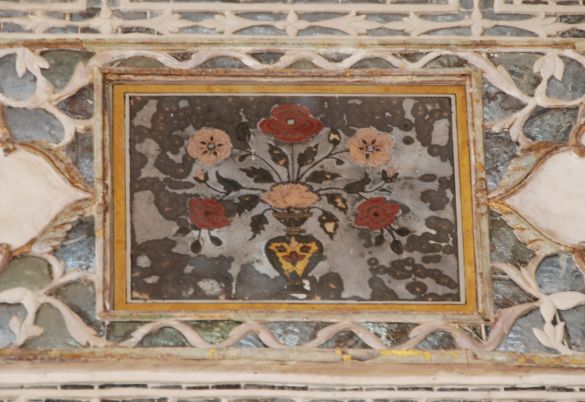Steeds een stukje verder het paleis in Fort Amber in.
Alleen deze keer besloot ik toch eerst even een stukje
terug te lopen. Als we dan later weer verder lopen
zie ik iets dat ik fantastisch mooi vind.
De muren van Sukh Mandir of Diwan-I-Khas zijn prachtig. Daar wil ik nog even bij stil staan.
Met glas, spiegel, marmer en pleisterwerk. Dat zal bij kaars- of toortslicht er spectaculair uitzien.
Het centrale paneel van de vorige foto.
Die decoraties zie je niet alleen op de muren en plafonds van de verandah maar ook bij de toiletten.
De marmeren bloempartijen verschillen allemaal van elkaar. Zag je in mijn vorige bericht de marmeren vlinder tussen de bloemen?
Latrines
Latrines, as designed and used till within our living memory, are to be found in different parts of the palace.
Those situated between the Sheesh Mahal (Mirror Palace) and Man Singh Palace were probably used by the ruler and the royal family.
They were supplied with both hot and cold water.
Lit torches provided light at night.
The palace has about a hundred such latrines.
Het fort is heel indrukwekkend.
Als we over een galerij lopen zie ik aan de overkant deze afbeeldingen tegen de muur. Deze maken een diepe indruk. Vooral de onderste laag met met schijnbaar eenvoudige florale motieven in heel genuanceerde, onopvallende kleuren.
Ik vond ze schitterend!
Geen idee wat al die bouwwerken in de omgeving zijn. Of dit allemaal bij Fort Ajmer (Amber) hoort weet ik niet. Er is een fort in de buurt met de naam Taragarh Fort. Maar of dat is wat we hier boven op de heuvel zien weet ik niet.

